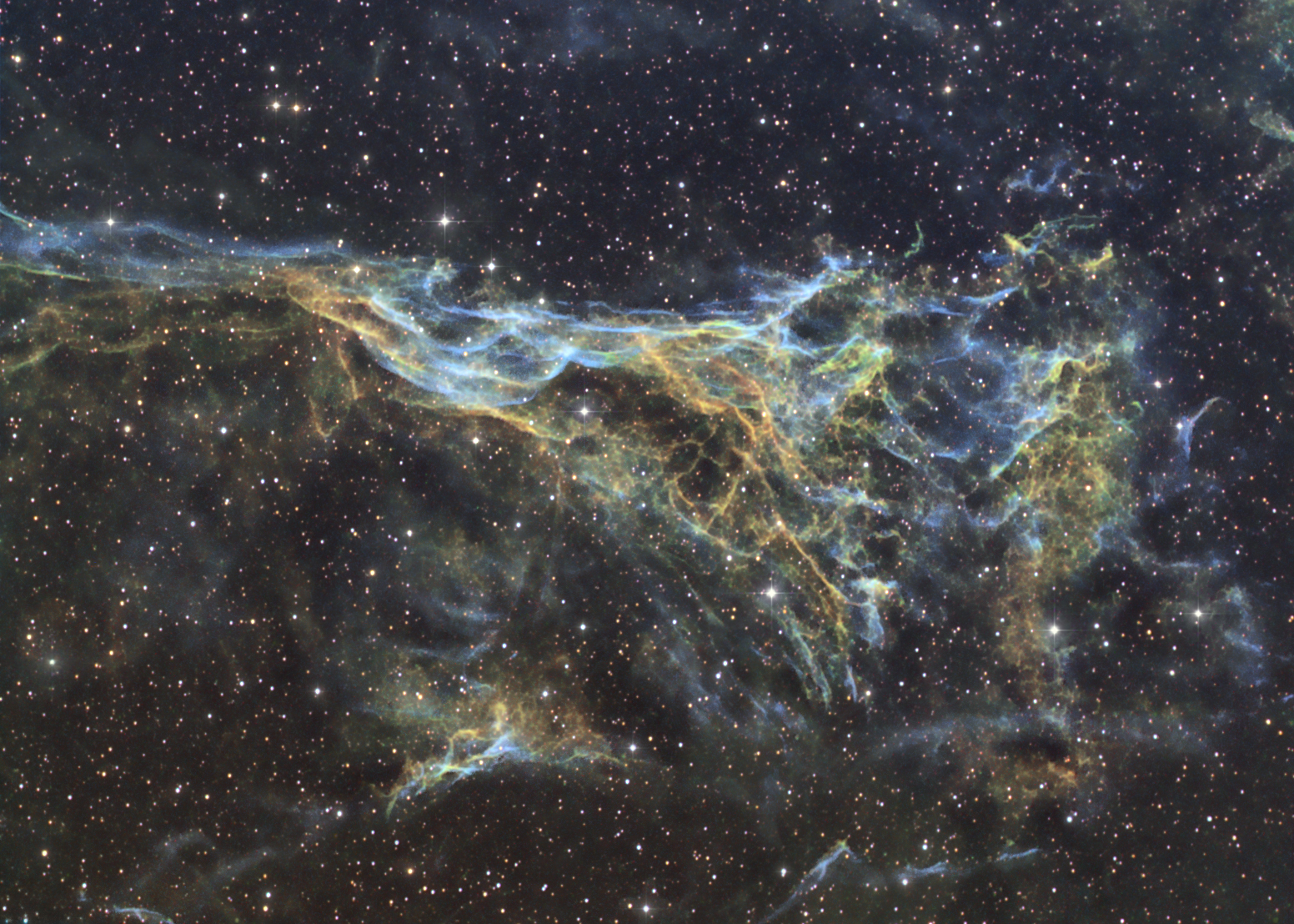
RA: 20h 51m 10s Dec: +32° 09' 53, Mag: Unknown , Size: 60 arcmin, Distance: ~2,600 ly

RA: 20h 51m 10s Dec: +32° 09' 53, Mag: Unknown , Size: 60 arcmin, Distance: ~2,600 ly
Pickering’s Triangle was discovered in 1904 by Willamina Fleming of the Harvard Observatory while examining photographic plates of the area. The object was named in honor of her boss, astronomer Edward Charles Pickering, then director of the Observatory. Pickering’s Triangle is part of the much larger Veil Nebula structure which is a supernova remnant in the constellation Cygnus. The supernova event is estimated to have occurred approximately 5000 - 8000 year ago. The rope like twisty filaments are believed to be shock waves that are so thin that the shell is visible only when viewed edge-on giving the shell the appearance of a filament.
| Location & Date | Backyard, Abbott Observatory - July 2014 Temperature - Low 60's F |
| Telescope | Orion ED80 refractor, 600mm F/7.3, Losmandy G11 Gemini, Prime Focus, Image scale 2.54 arcsec/pixel |
| Camera | SBIG ST-2000XM (KAI-2020 CCD) w/CFW10 AstroDon 5nm Ha, OIII, SII filters CCD temp -15°C |
| Exposure Times | Ha 24x15m, OIII 24x15m, SII 24X15m -Bin 1x1 |
| Other Information | Image planning - CCD Navigator v3 Image acquisition/focus/guiding/dither - CCD Autopilot4 w/CCDSoft/TheSky6/PinPoint |
| Image Processing | Images Plus 2.75 - Calibrate, Normalize, Alignment, Sigma Combine, Deconvolution
Adobe CS4 - Hubble Palette color mapping: SII (R), H-a (G), OIII (B) using technique by Dr. Travis Rector, U. of Alaska, NR, Star Spikes, JPEG conversion |